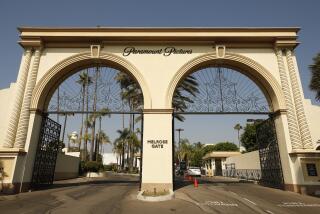Beauty! Sharks! Silence! Noise!
VOICES. VOICES that speak of parks, of cities, of Los Angeles. From architects and designers, from children, from students, from activists, from visionaries, from critics, from people. Listen to these Grand Intervention contributors, and their unrepresentative views; grant them, for a moment, anonymity.
“At the heart of downtown L.A., hidden between civic buildings, lays a forgotten park. Cut in three parts by busy streets, the schizophrenic plan is now a shadowy garden, a pitiable monument and a bleak parking lot. The park reflects the nature of the neighboring government bodies.”
Yet “the opportunity to develop a 16-acre open space in the heart of one of the world’s great metropolises is rare and precious.”
Of course, a park is a park. Thus, green comes first: “The park should offer lots of grassland areas, meadows for picnics, flower beds, ponds, and fountains.” “More trees, colorful flowers.... Beauty! And Silence! Peace and quiet from the noise of the traffic.” “Endless Orchard.” “A Great Lawn and Urban Meadow.” “An organic field.” And water: streams, ponds, fountains, or fountains that you can walk through. Sculptural torches of water that would light up the uncertain downtown night.
A problem is that the steep slopes and the high-traffic streets cutting through make it an unusual terrain. The solution: terraces for the plants, cascades for the water, bridges for pedestrians. Bridges of all kinds, from the continuous forest path to the “Wind Tunnel Footbridge” made of steel and aluminum powered by the wind. Bridges that offer retail outlets, a floating pathway that rises to different levels. Or “LAp_dancer,” a pedestrian bridge made as a sculptural piece, a la Calatrava.
The park is also conceived as a vibrant public space to fulfill “people’s appropriation of the public realm.” This includes small retail, dining and entertainment venues in the park, an amphitheater for performances, including outdoor free concerts, and art exhibitions. In the park, to create a mass audience for the arts, 20 mini-auditoriums and numerous galleries should be built so that local residents and downtown workers could initiate themselves into the artistic experience. Above the park is a new Museum of the City that would be housed in a “bar-like building hovering above Grand Avenue” and between the two government buildings. Art would take over the walls of these buildings by painting murals on them.
Public space should be adapted to the needs of the local residents, particularly low-income residents. Children should be present in the park, using a playground conceived as an educational tool. A daring proposal locates a middle school on the roof of the Hall of Administration building. As for children, they draw their own visions: a big swimming pool, an even bigger basketball court, a waterfall, a pond with ducks, (a restroom, please), an art center, a skate park, swings and monkey bars, without forgetting a Sizzler and a Denny’s. Travis, an 11-year-old who lives on skid row, adds to all this his specific requests: a bridge, but this one should come with sharks. And, in the center of his drawing, a jail. Most proposals omit the H-word, except for one that sees the park as “a place for the homeless to congregate” (a safe prediction, in fact).
Then, there is the technological escape. The “Park of the Future” blends physical and virtual spaces with hybrid spaces: the electronic soapbox for free speeches broadcast by audio and video; the entertainment and cultural center with a public theater and sound stage; the solar-powered light sculpture that would be a scientifically accurate monument to global warming; the interactive fly-through map of downtown L.A. in an immersive environment.
Another project creates a place for anonymous celebrities by capturing images of people passing by and projecting them on large screens. Or in the “I dream L.A. gallery,” an online interactive database that allows users to upload imagery and to experience it.
Throughout the diversity of these visions, there is a shared feeling: the nostalgia for the lost urban world of the “true city,” yet the consciousness that such a time is gone, at least for L.A. Thus, the jump into a technological future, or the withdrawal into a bucolic natural past, decidedly anti-urban. Because there are no models for our current city, most projects call for citizens to participate in inventing their city. So, how to wish upon a future star from the debris of their shattered planet.
More to Read
The biggest entertainment stories
Get our big stories about Hollywood, film, television, music, arts, culture and more right in your inbox as soon as they publish.
You may occasionally receive promotional content from the Los Angeles Times.










